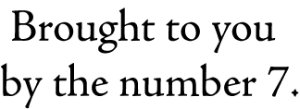New York: Dover Publications, 1995. - 480 pages
It has become customary at many colleges and universities to teach undergraduate courses in boundary value problems, Fourier series, and integral transforms. These courses usually emphasize the Fourier series or Laplace transforms, and then treat some problems in partial differential equations as applications.
In teaching such a course, the author has found two detrimental effects on students. Those who are mathematically inclined are left with the impression that the solution of partial differential equations consists of some rather dull manipulations with infinite series or integrals, and is not worthy of further study. Those students who are primary interested in technical applications also get the feeling that all partial differential equations can be treated by separation of variables or integral transforms. When a problem arises to which such methods do not apply (and this often happens quite soon), they either use the only methods they know, arriving at wrong results, or they simply give up in exasperation. After this, they have a strong feeling that the mathematicians have cheated them, and tend to distrust all mathematical techniques.
This book is an attempt to present the materials usually covered in such courses in a framework where the general properties of partial differential equations such as characteristics, domains of dependence, and maximum principles can be clearly seen. It is intended for a one-year course in partial differential equations, including the elementary theory of complex variables.
It has become customary at many colleges and universities to teach undergraduate courses in boundary value problems, Fourier series, and integral transforms. These courses usually emphasize the Fourier series or Laplace transforms, and then treat some problems in partial differential equations as applications.
In teaching such a course, the author has found two detrimental effects on students. Those who are mathematically inclined are left with the impression that the solution of partial differential equations consists of some rather dull manipulations with infinite series or integrals, and is not worthy of further study. Those students who are primary interested in technical applications also get the feeling that all partial differential equations can be treated by separation of variables or integral transforms. When a problem arises to which such methods do not apply (and this often happens quite soon), they either use the only methods they know, arriving at wrong results, or they simply give up in exasperation. After this, they have a strong feeling that the mathematicians have cheated them, and tend to distrust all mathematical techniques.
This book is an attempt to present the materials usually covered in such courses in a framework where the general properties of partial differential equations such as characteristics, domains of dependence, and maximum principles can be clearly seen. It is intended for a one-year course in partial differential equations, including the elementary theory of complex variables.

